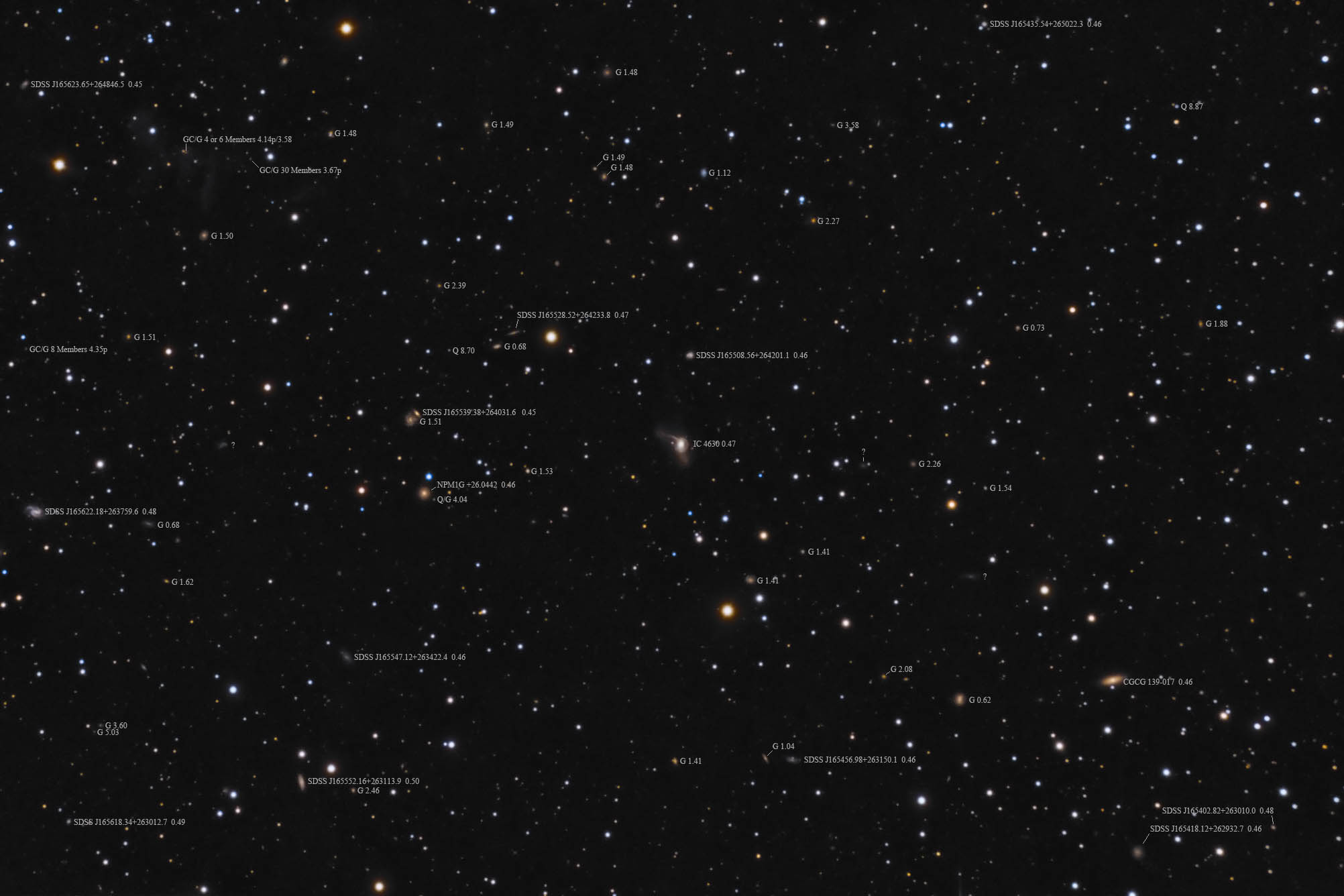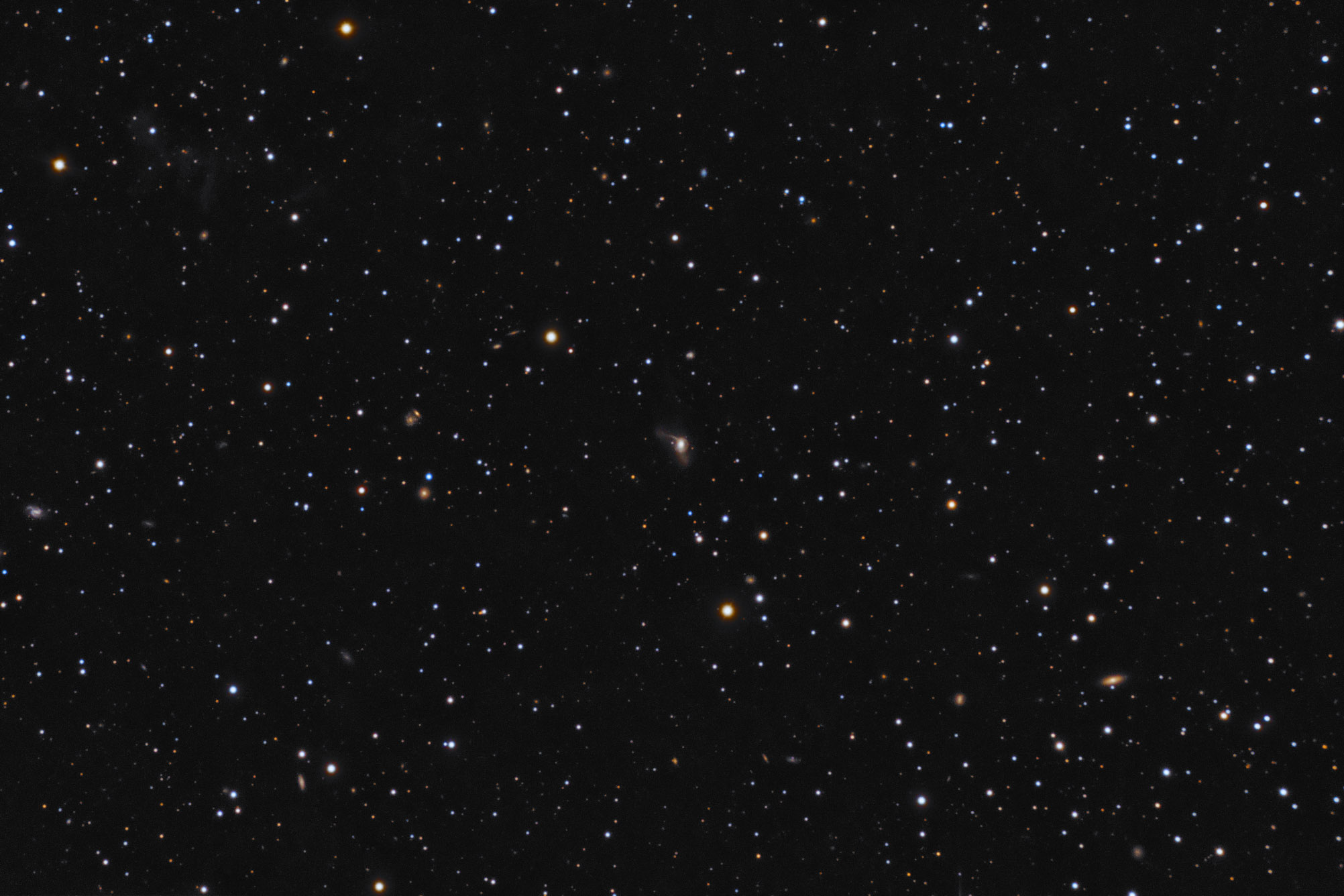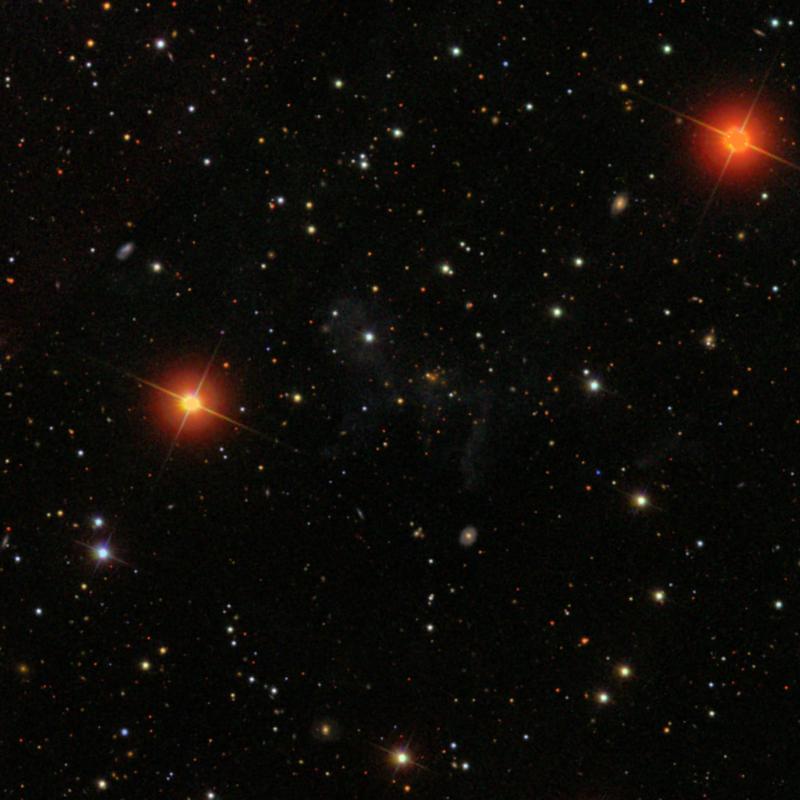| Description | Images |
Object name: IC4630Designation(s): IC4630, PGC59257, IC 4630 was suggested to me by Sakib Rasool. It is a spiral starburst galaxy which is likely the result of a merger in progress -- SIMBAD considers it two galaxies while NED sees only one as I do. Though the plumes indicate it is the result of a merger. A merger some feel is still going on. It is a mostly white galaxy with two plumes. NED classes it as S? It is located in Hercules below the keystone at a distance of a bit under a half billion light-years. Besides the plumes, it has a nearly complete arc around a bright core. I find little on it other than it is included in many papers about mergers in progress. The annotated image shows a number of related galaxies at its redshift. Most are smaller galaxies. I've annotated them by catalog entry rather than the generic G or Q used for the rest. With so many in the immediate area, it's not much of a stretch to think this galaxy has been feeding on its dwarf neighbors for a long time. IC 4630 was discovered by Stephane Javelle on July 27, 1903. Related Designation(s):2MASS J16550958+2639462, 2MASX J16550959+2639463, 2MASXi J1655095+263946, ASK 407805.0, CGCG 139-020, CGCG 1653.1+2644, GALEXASC J165509.64+263945.3 , IC 4630, IC4630, IRAS 16531+2644, IRAS F16531+2644, MCG +04-40-007, MRK 1111, NPM1G +26.0441, NSA 070026, NVSS J165509+263947, PGC 059257, PGC59257, SDSS J165509.57+263946.4, SDSS J165509.58+263946.5, UCM 1653+2644, UGC 10607, UZC J165509.6+263946, VV 852, [TTL2012] 021708, | Permanent link: https://images.mantrapskies.com/catalog/OTHER/IC4630-PGC59257/PGC059257L4X10RGB2X10-ID.JPG Permanent link: https://images.mantrapskies.com/catalog/OTHER/IC4630-PGC59257/PGC059257L4X10RGB2X10.JPG |



